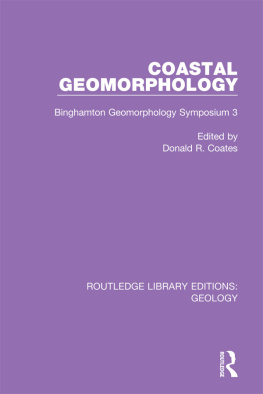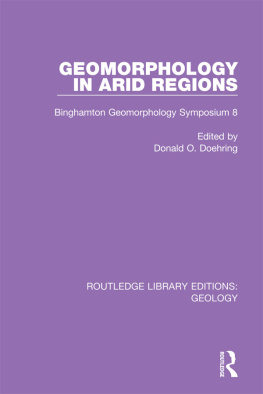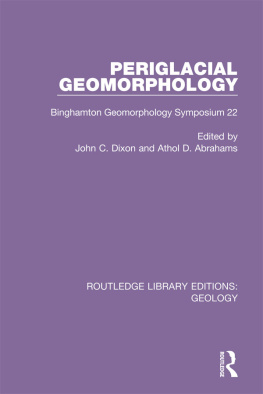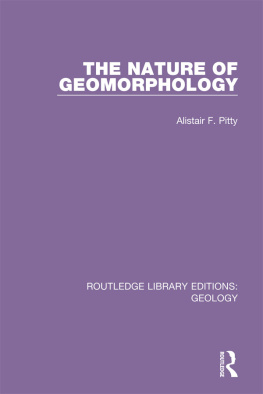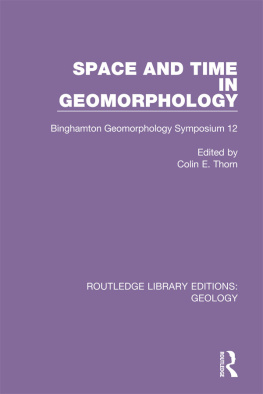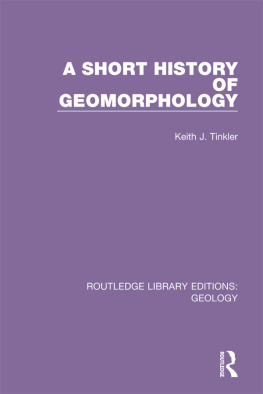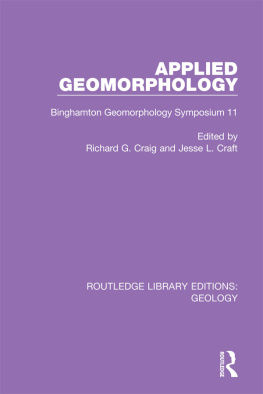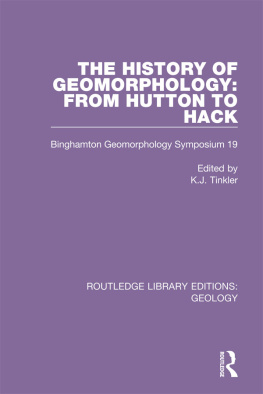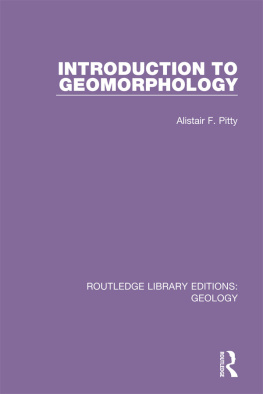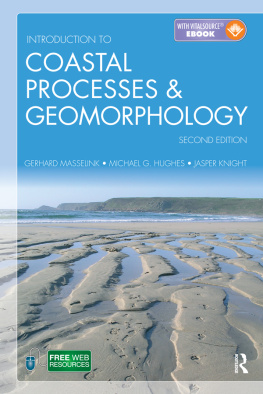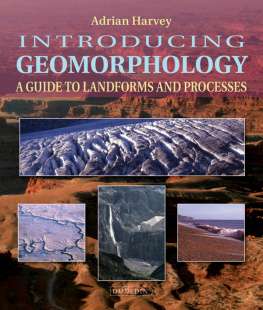Contents
- Chapter 5 Sand Bars Along Low Energy Beaches Multiple Parallel Sand Bars of Southeastern Cape Cod Bay, Part 1, by Nilsson
Transverse Bars, Part 2, by Niedoroda
Guide
Print Page Numbers

ROUTLEDGE LIBRARY EDITIONS:
GEOLOGY
Volume 5
COASTAL GEOMORPHOLOGY
COASTAL GEOMORPHOLOGY
Binghamton Geomorphology Symposium 3
Edited by
DONALD R. COATES

First published in 1973
First published by Allen & Unwin in 1980
This edition first published in 2020
by Routledge
2 Park Square, Milton Park, Abingdon, Oxon OX14 4RN
and by Routledge
52 Vanderbilt Avenue, New York, NY 10017
Routledge is an imprint of the Taylor & Francis Group, an informa business
1973, 1980 Donald R. Coates
All rights reserved. No part of this book may be reprinted or reproduced or utilised in any form or by any electronic, mechanical, or other means, now known or hereafter invented, including photocopying and recording, or in any information storage or retrieval system, without permission in writing from the publishers.
Trademark notice: Product or corporate names may be trademarks or registered trademarks, and are used only for identification and explanation without intent to infringe.
British Library Cataloguing in Publication Data
A catalogue record for this book is available from the British Library
ISBN: 978-0-367-18559-6 (Set)
ISBN: 978-0-429-19681-2 (Set) (ebk)
ISBN: 978-0-367-89894-6 (Volume 5) (hbk)
ISBN: 978-1-00-302207-7 (Volume 5) (ebk)
Publishers Note
The publisher has gone to great lengths to ensure the quality of this reprint but points out that some imperfections in the original copies may be apparent.
Disclaimer
The publisher has made every effort to trace copyright holders and would welcome correspondence from those they have been unable to trace.
COASTAL
GEOMORPHOLOGY
COASTAL
GEOMORPHOLOGY
Donald R. Coates, Editor
A proceedings volume of the Third Annual Geomorphology Symposia Series, held at Binghamton, New York September 2830, 1972

First published in 1973
First published by Allen & Unwin in 1980
This book is copyright under the Berne Convention. All rights are reserved. Apart from any fair dealing for the purpose of private study, research, criticism or review, as permitted under the Copyright Act, 1956, no part of this publication may be reproduced, stored in a retrieval system, or transmitted, in any form or by any means, electronic, electrical, chemical, mechanical, optical, photocopying, recording or otherwise, without the prior permission of the copyright owner. Enquiries should be sent to the publishers at the undermentioned address:
GEORGE ALLEN & UNWIN LTD
40 Museum Street, London WC1A 1LU
Donald R. Coates 1973, 1980
British Library Cataloguing in Publication Data
Coastal geomorphology.
1. Coasts - Congresses
I. Coates, Donald Robert
551.4'5 GB450
ISBN 0-04-551038-5
Contents
Chapter 5 Sand Bars Along Low Energy Beaches Multiple Parallel Sand Bars of Southeastern Cape Cod Bay, Part 1, by Nilsson
Transverse Bars, Part 2, by Niedoroda
Dedicated to Cuchtaine King esteemed friend and leader in modern geomorphology
Cover photographs of Alaska and Massachusetts from Suzannes Lament. Courtesy of Miles Hayes.
This proceedings volume presents the collection of papers that were given at the Third Annual Geomorphology Symposium conducted in the Department of Geology, State University of New York at Binghamton, September 2830, 1972. All elements that contributed to a successful conference cannot be bound in writing, and one of these were the performances of Suzannes Lament. This beautifully created audio-visual experience of music and slides, developed by the University of Massachusetts Coastal Research Center, set the proper mood for speakers and participants. In this symposium on Coastal Geomorphology a particular type of environment forms the basis of discussion. This environment is such that scientists who classify themselves as geomorphologists, ecologists, engineers, geographers, sedimentologists, and stratigraphers can all make contributions of great value. The necessity for interdisciplinary cooperation in research in order to understand the processes and the terrain of the littoral zone is clearly reflected in the contributions to the symposium. The central theme that emerges from all papers is the dynamic aspect of the coastal environment, and the way geomorphic principles can be used to solve problems (in a problem-solving context). Thus all papers examine some aspect of the geomorphic situation, such as erosion, transportation, deposition, and/or morphology of coastal terrain.
For a period of almost two decades little additional work was done on the geomorphology of coasts after D.W. Johnson (1919) published his monumental work. During and since World War II, the study of beaches and coasts has grown rapidly. Their investigation has been both for pure scholarly research, such as elucidating the origin of certain features, and for study of practical problems that directly concern man. The increased insight gained from both types is necessary in todays world.
Coastlines comprise a major element of the earths landscape, and processes that shape this terrain are exceptionally complex. To have attempted to cover all of the myriad items about coastlines with their great variability would have been impossible and would have produced a smorgasbord of disjointed papers. Instead the volume largely concentrates on beaches, with particular influence to processes operating on barrier islands, and it provides insight into a variety of different locales.
The selection of authors was made to obtain as wide a geographic and topical forum as possible. They represent many academic institutions, from the United States, Canada and England, and also include workers from governments and industry. Coastal areas in the United States that are examined include Alaska, Delaware, Florida, Maryland, Massachusetts, New York, North Carolina, Oregon, Virginia and Washington. Also coasts of Bermuda, Canada, England, and Zululand are analyzed. The authors are specialists in several different fields of science and engineering, and many are the outstanding leaders of their discipline. They indicate the current status of research and provide some examples of new methods that are being used to obtain greater precision in studying this fragile and changeable environment.
The volume begins with the introductory statement that officially opened the symposium. The papers that were presented are called chapters and are divided into three main topical areas, or Parts. Each of the Parts contains a general statement by the editor which links the chapters and hopefully gives some perspective on the general theme. Some chapters could have been included in more than one section. They have been arranged to provide a balance between the themes of the three sections. For example, nearly all chapters contain ideas related to coastal processes, and geomorphic applications, in addition to those comprising the first and the final parts of the book.

